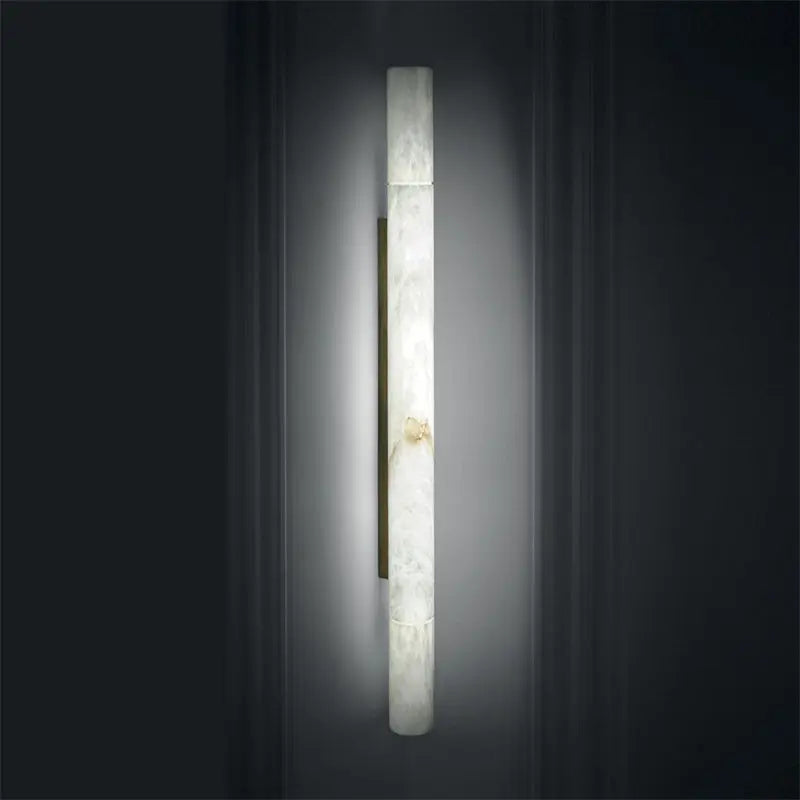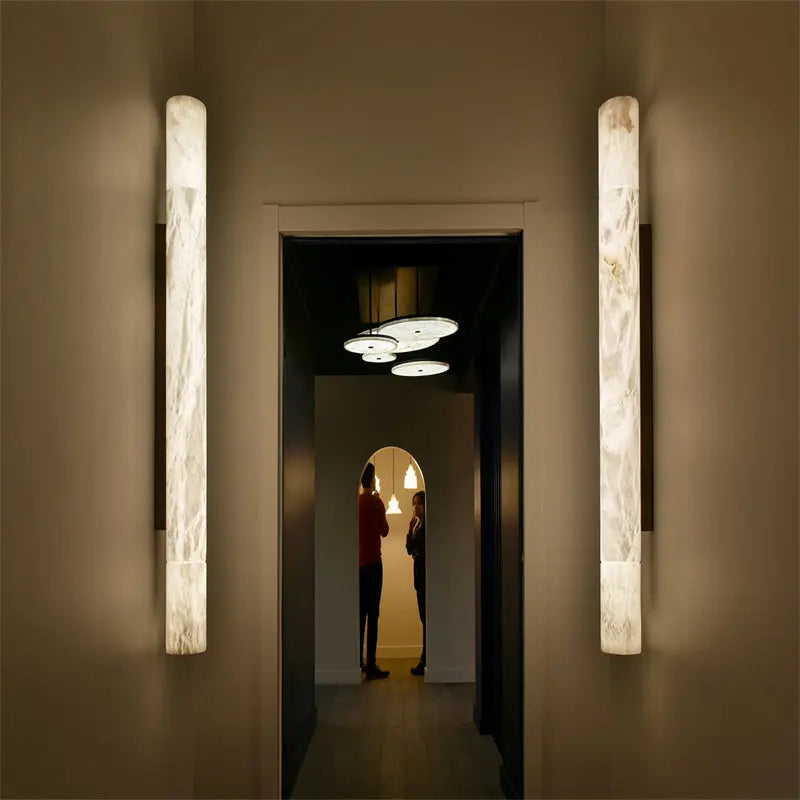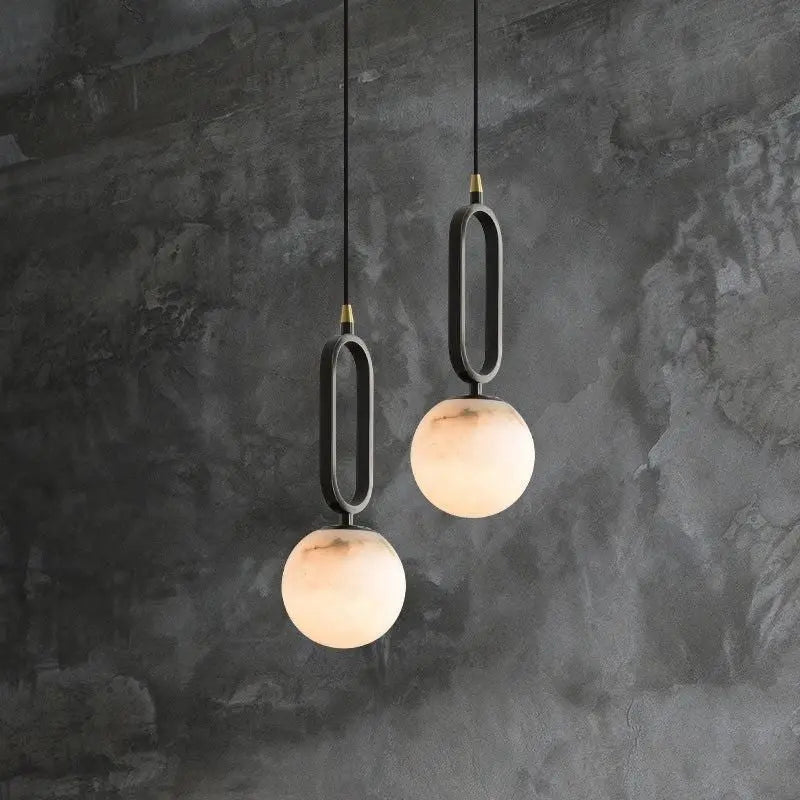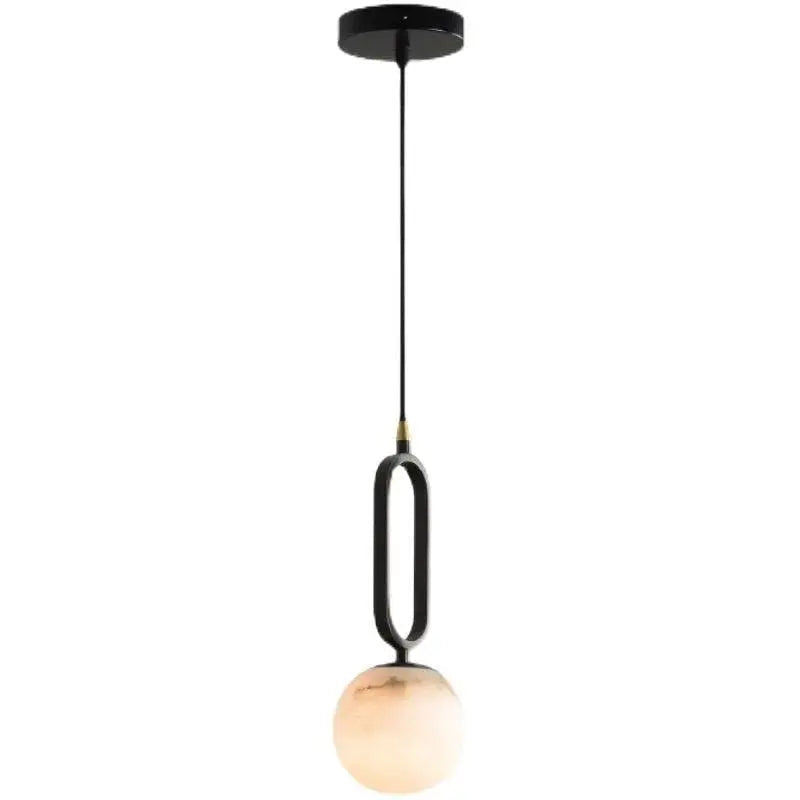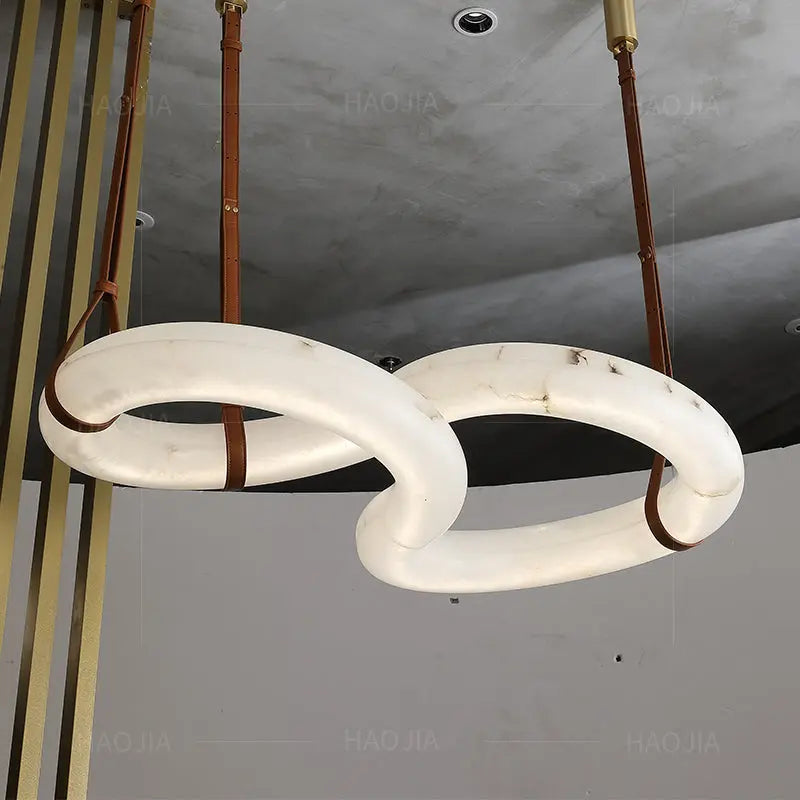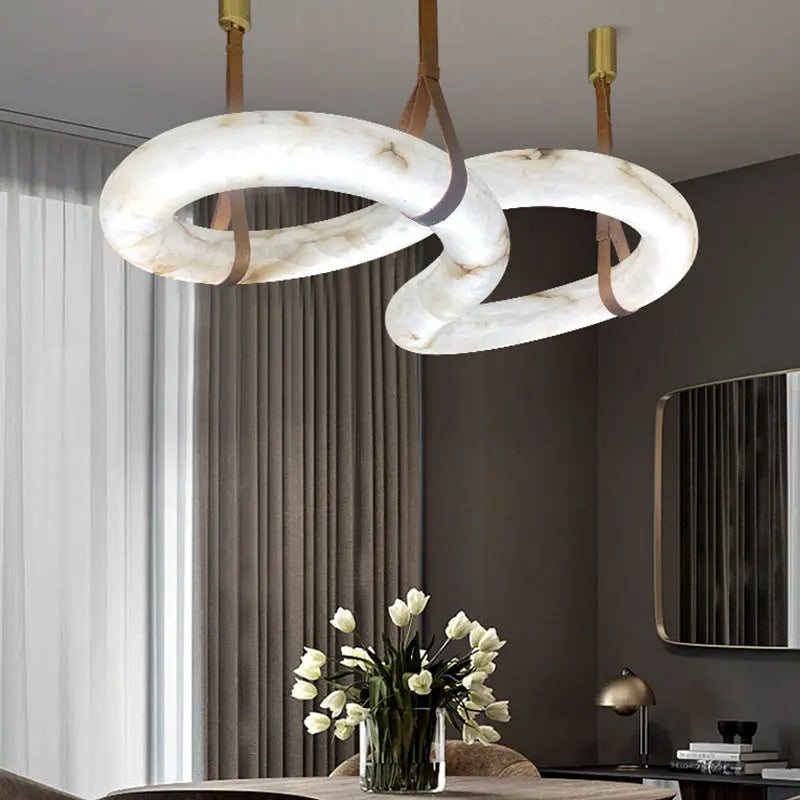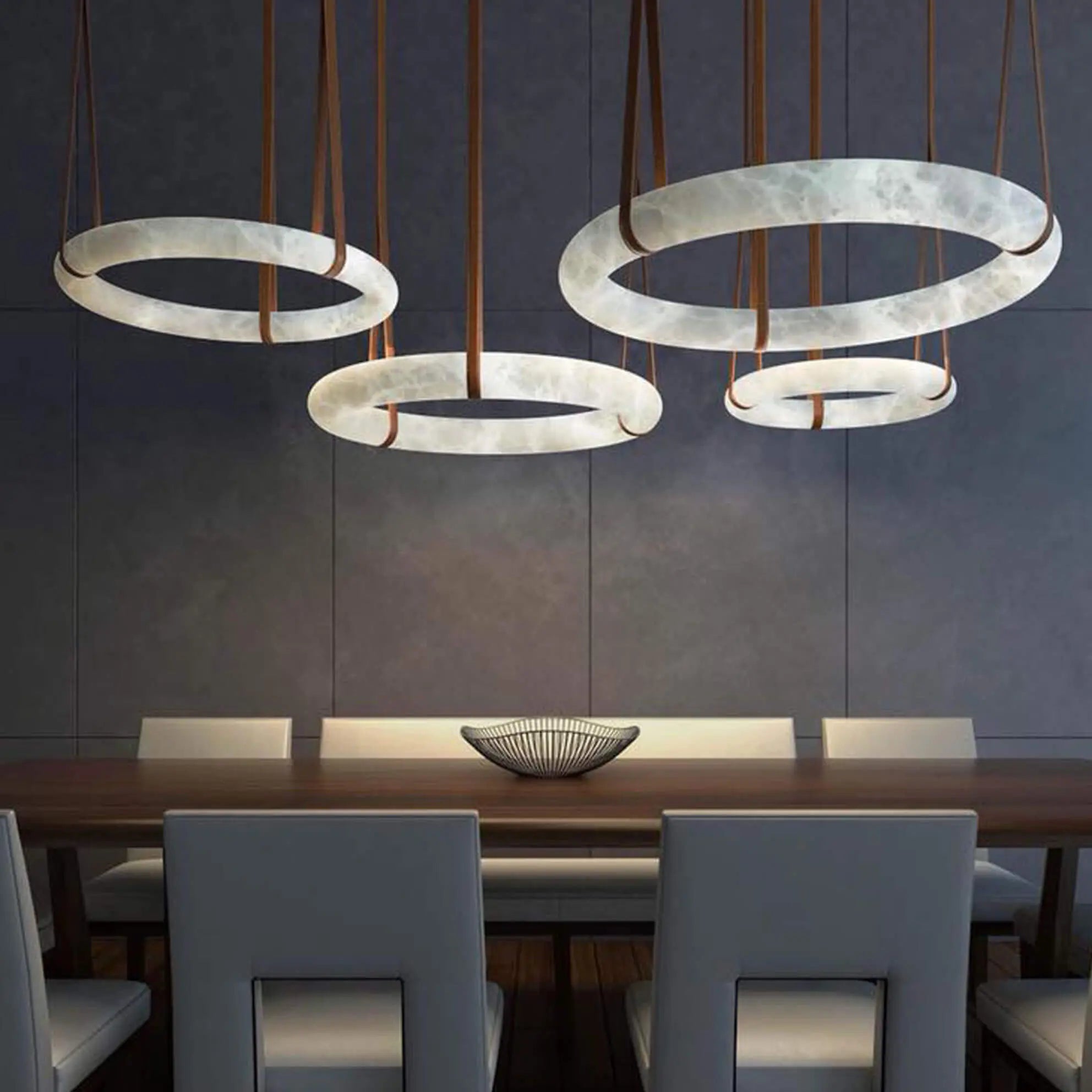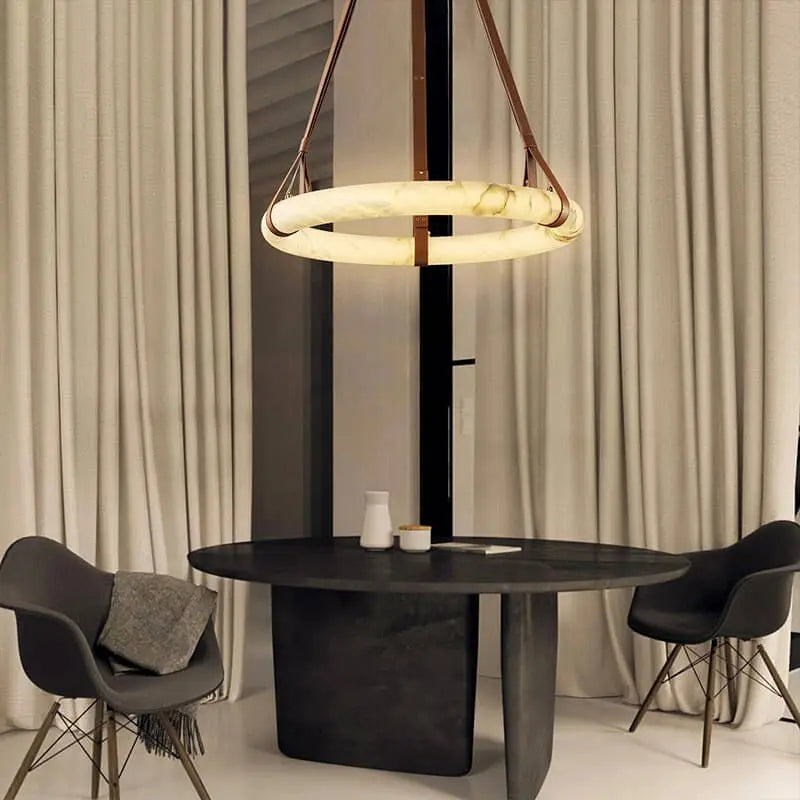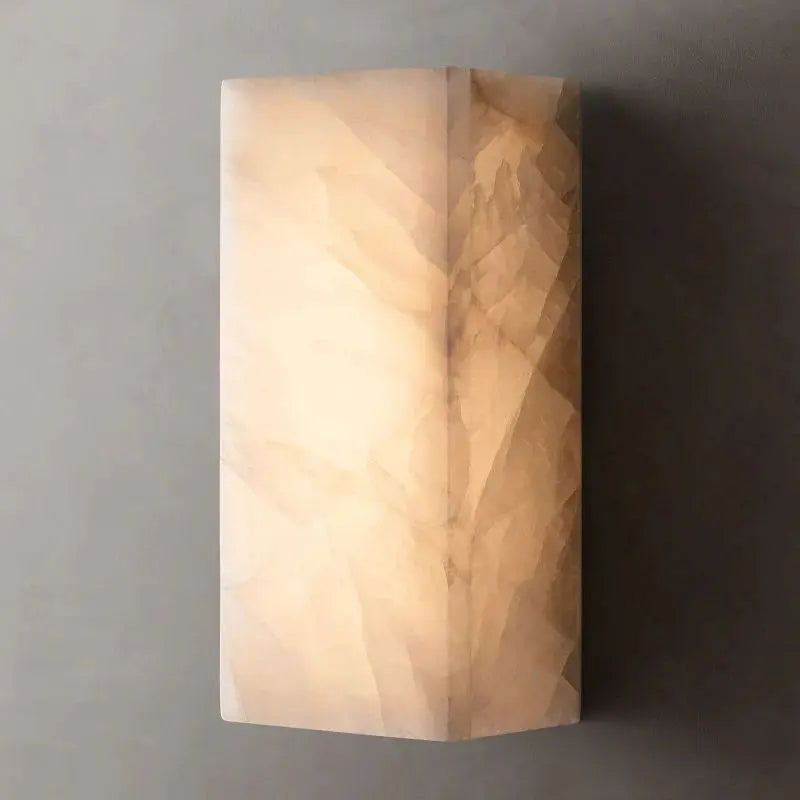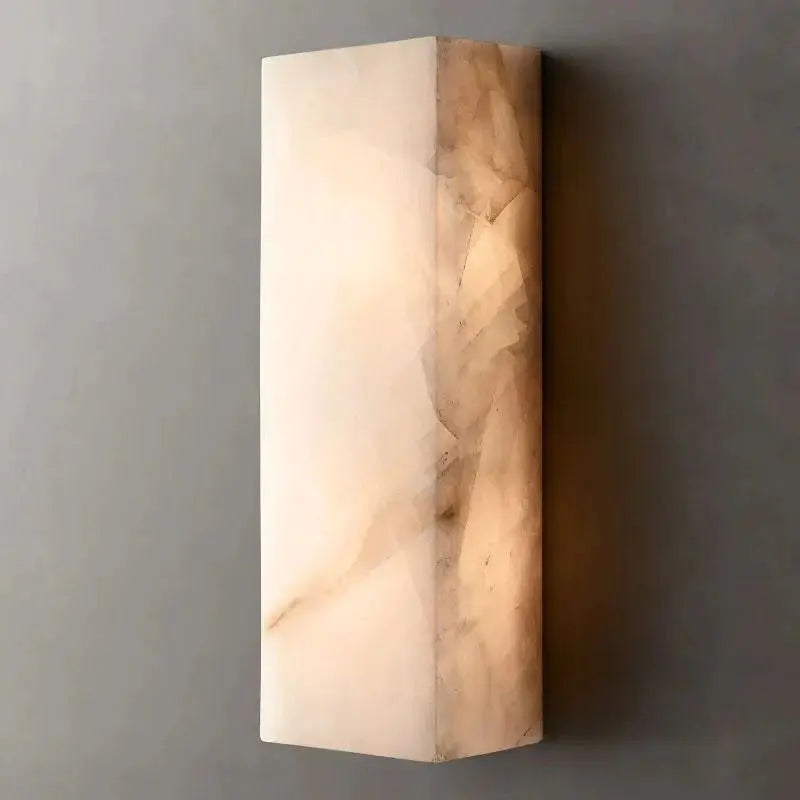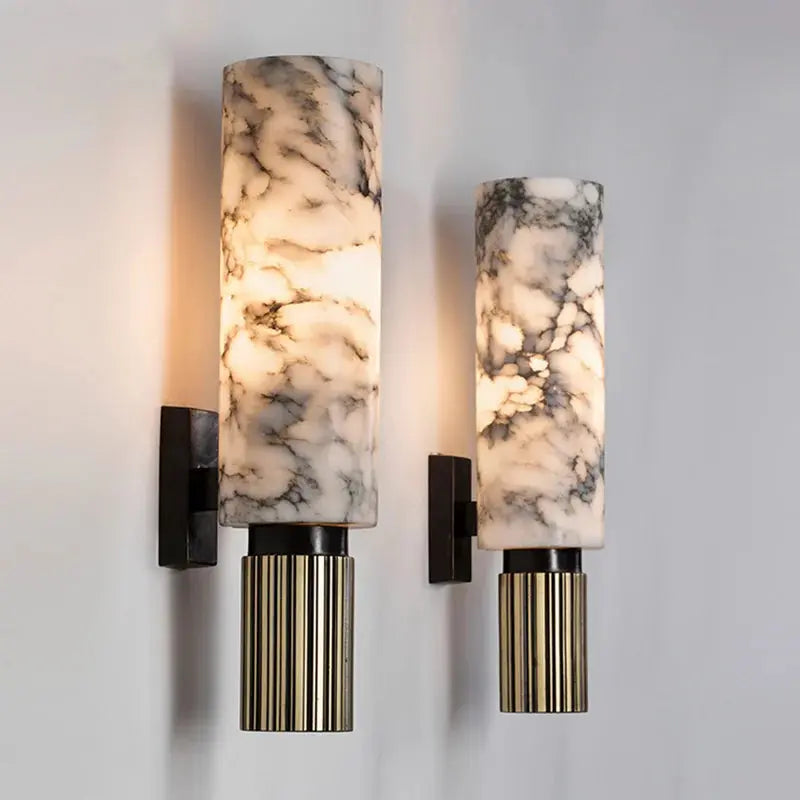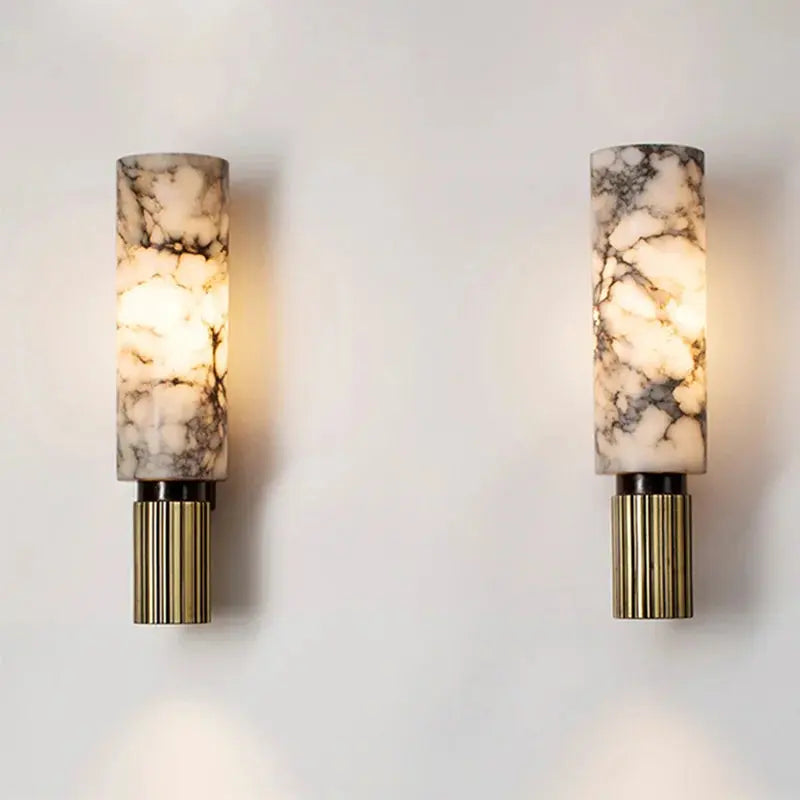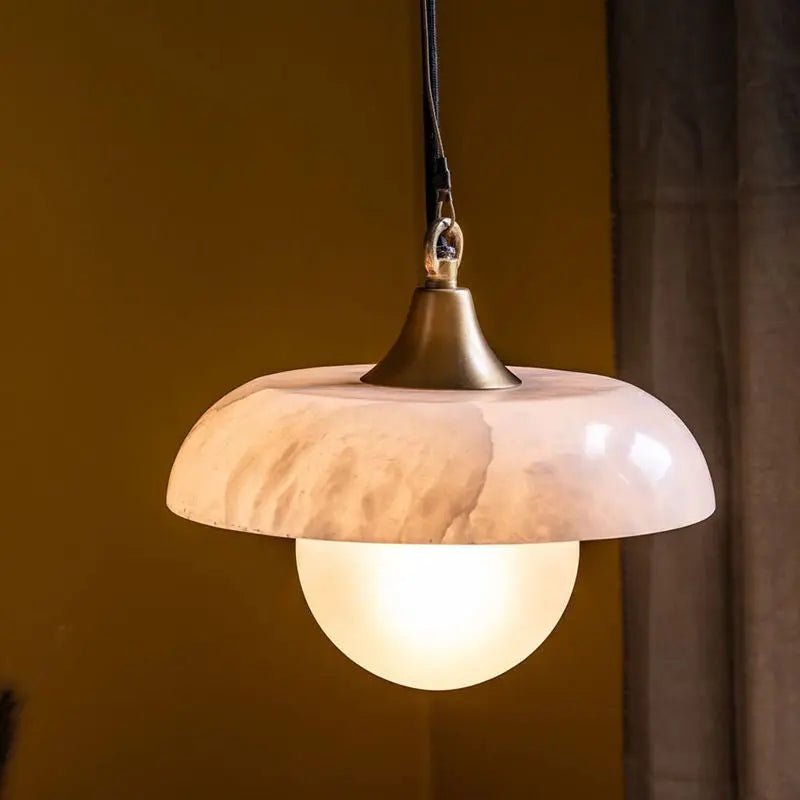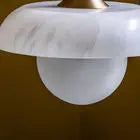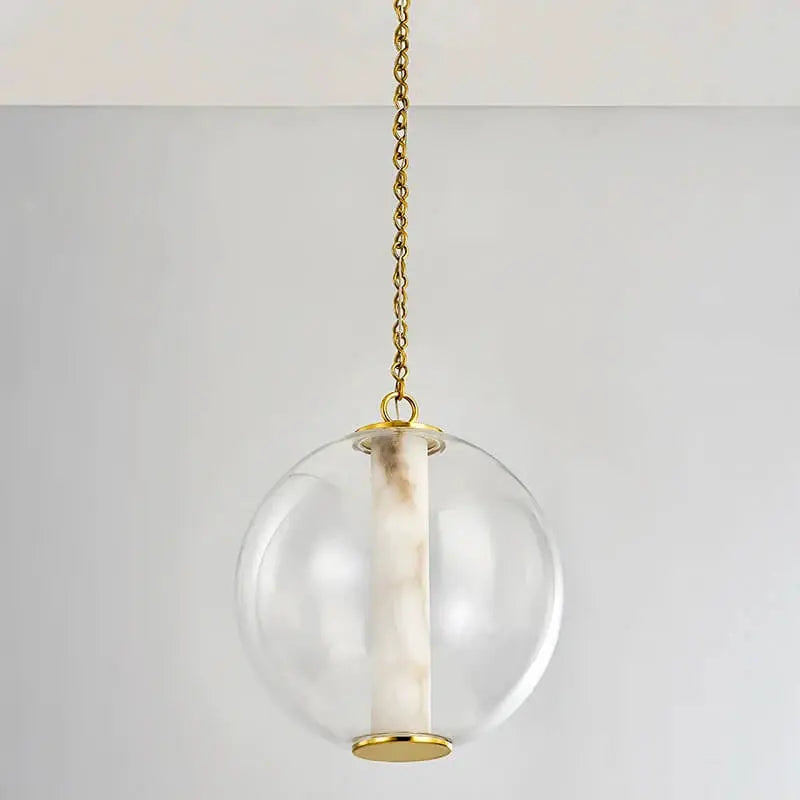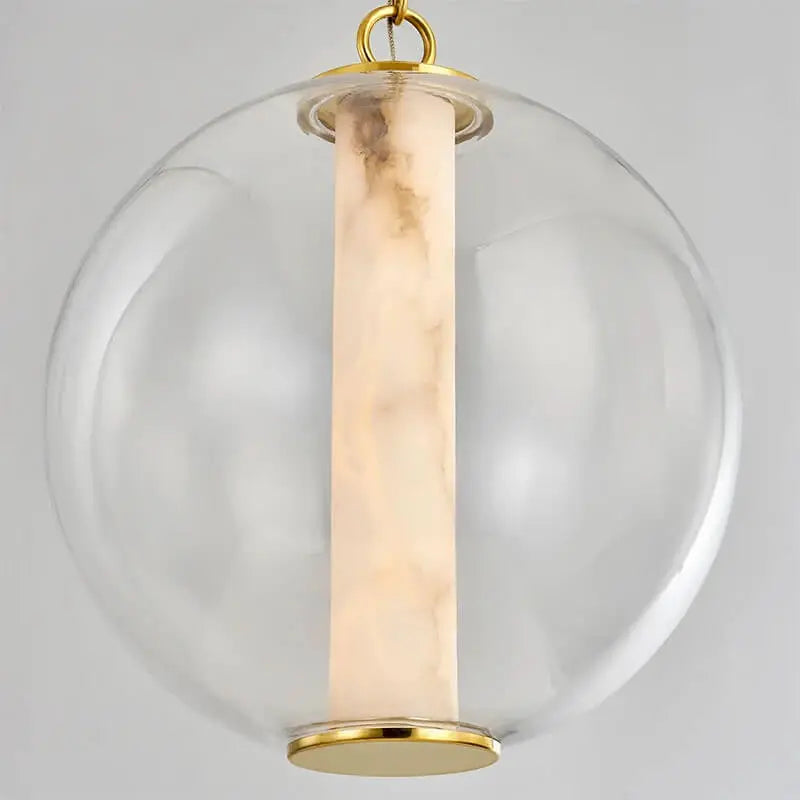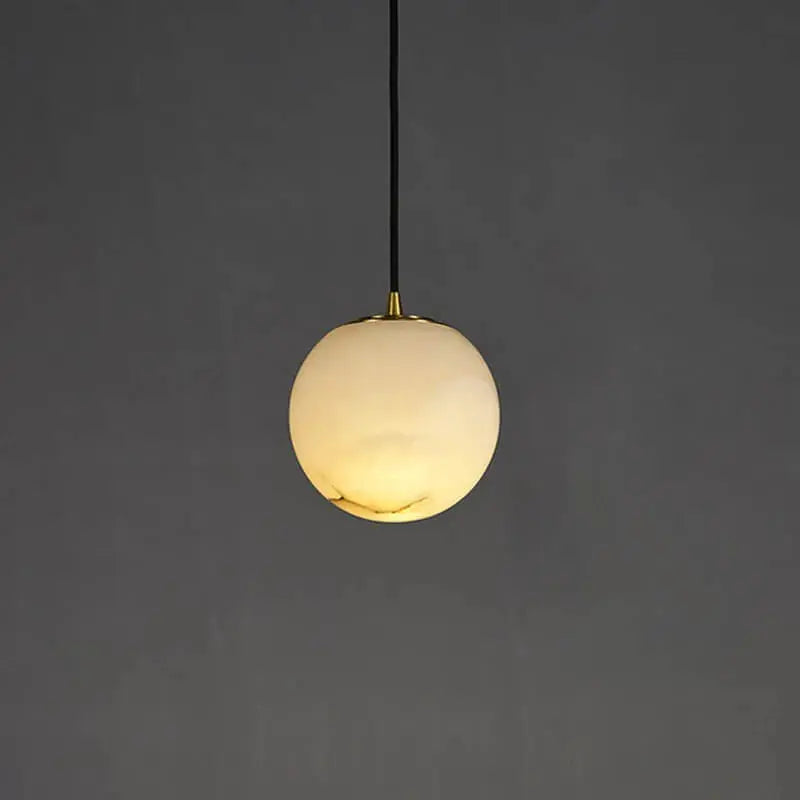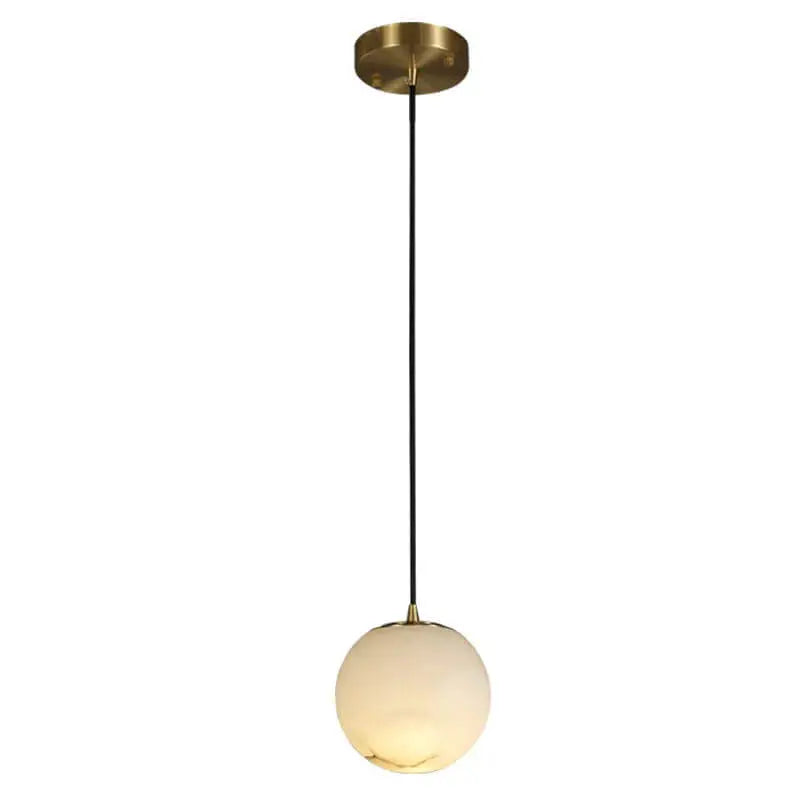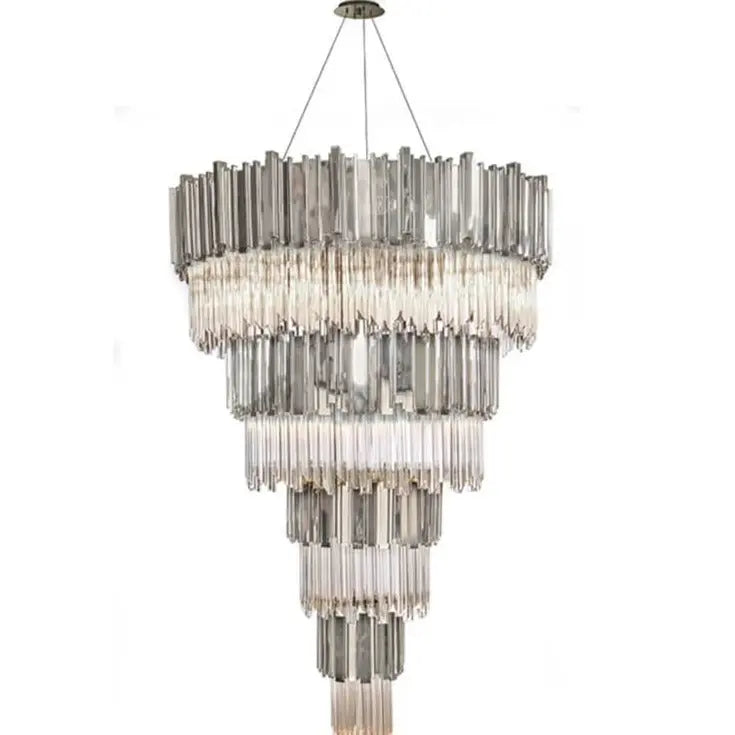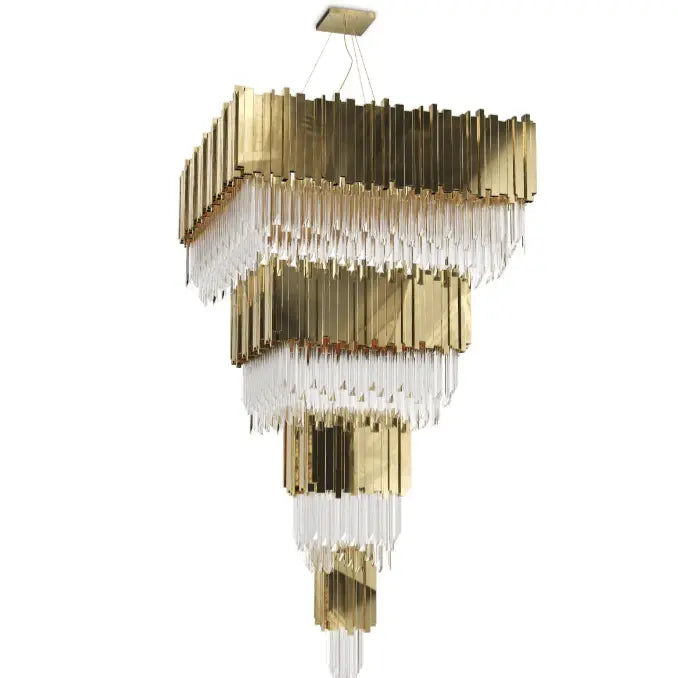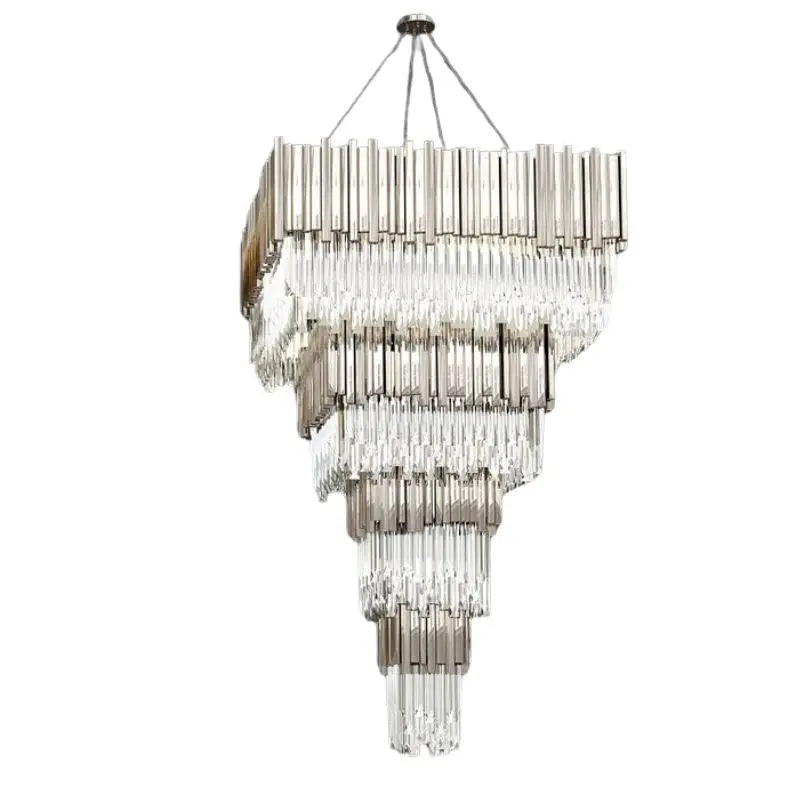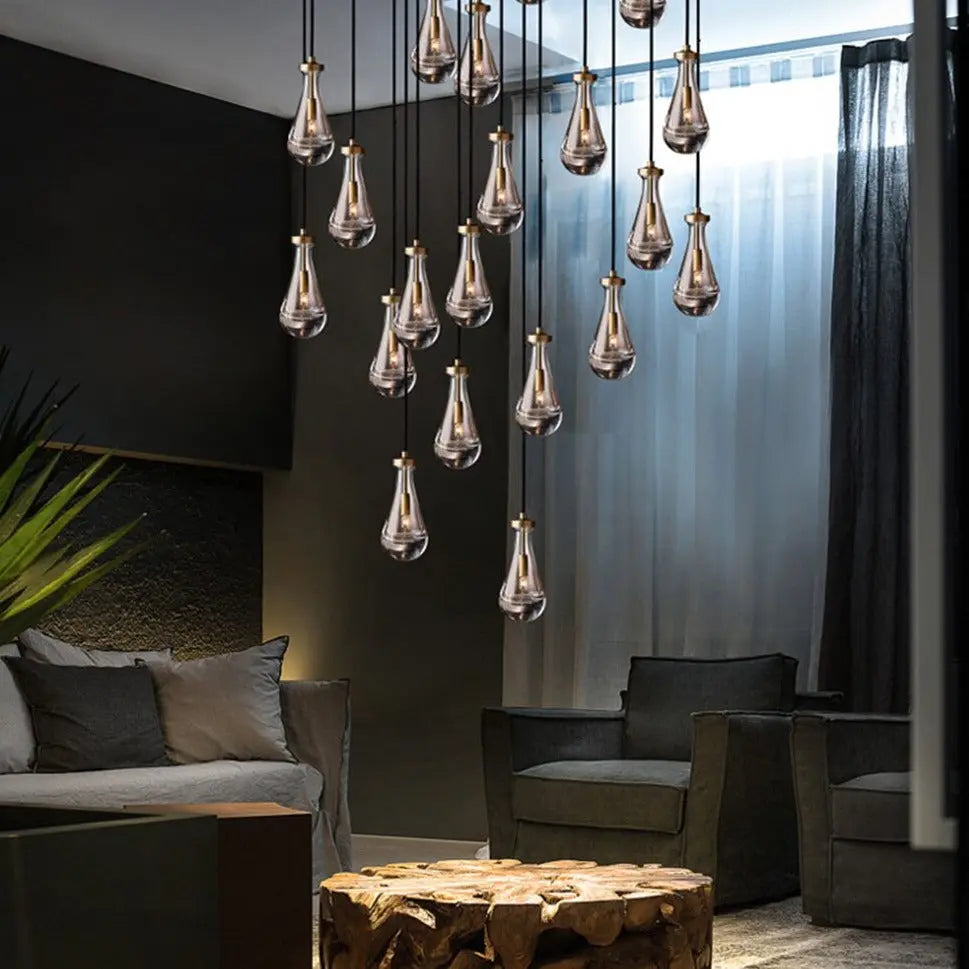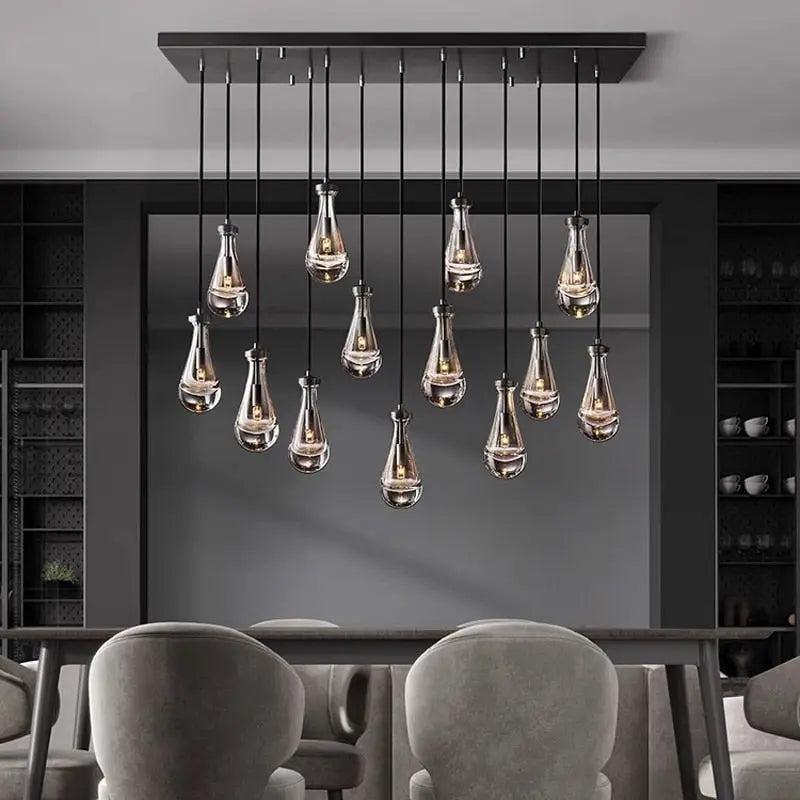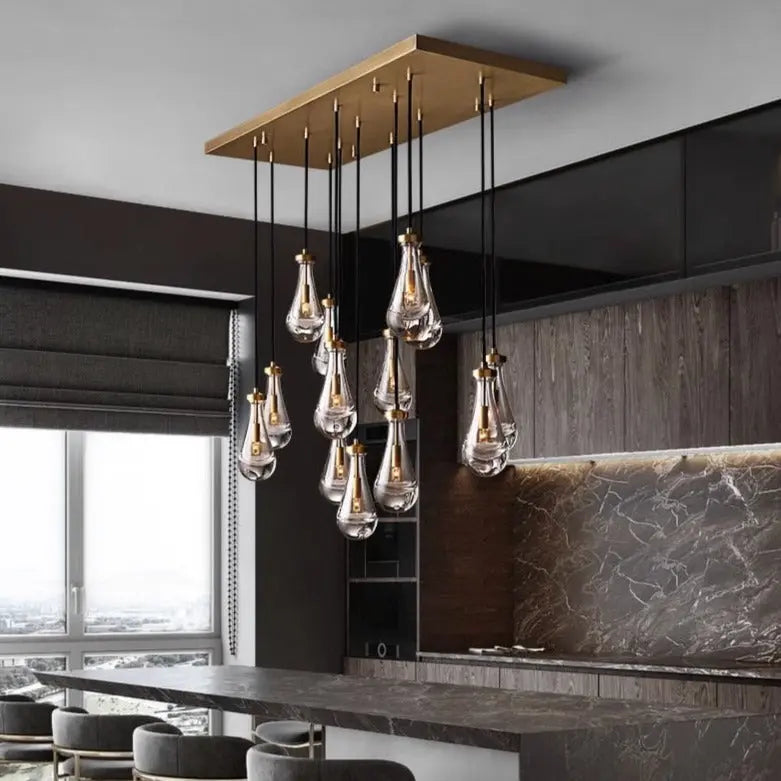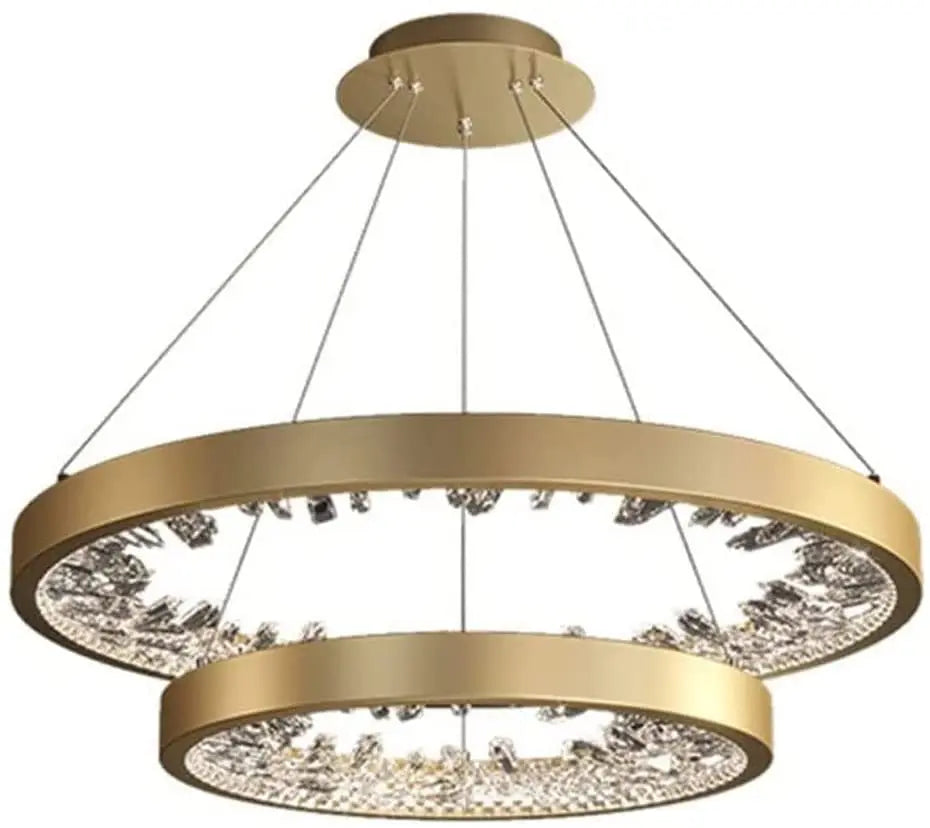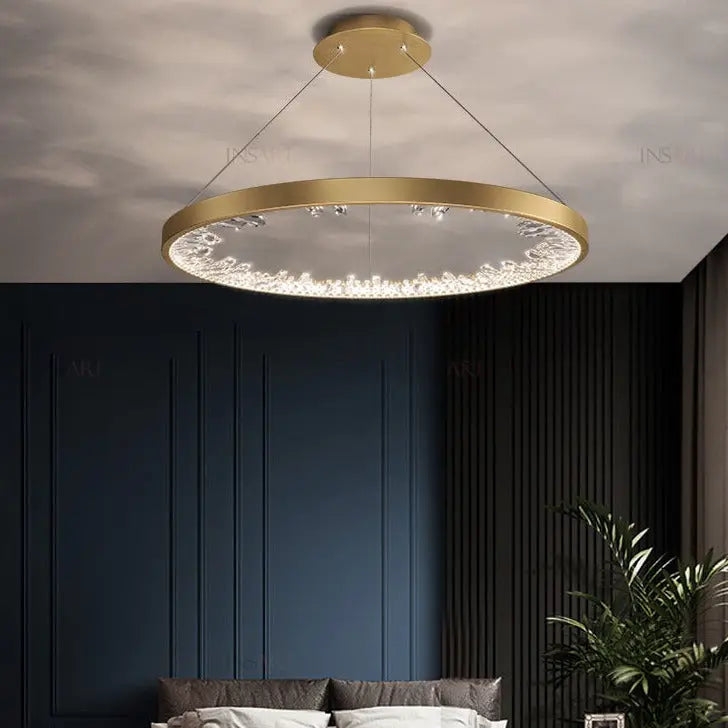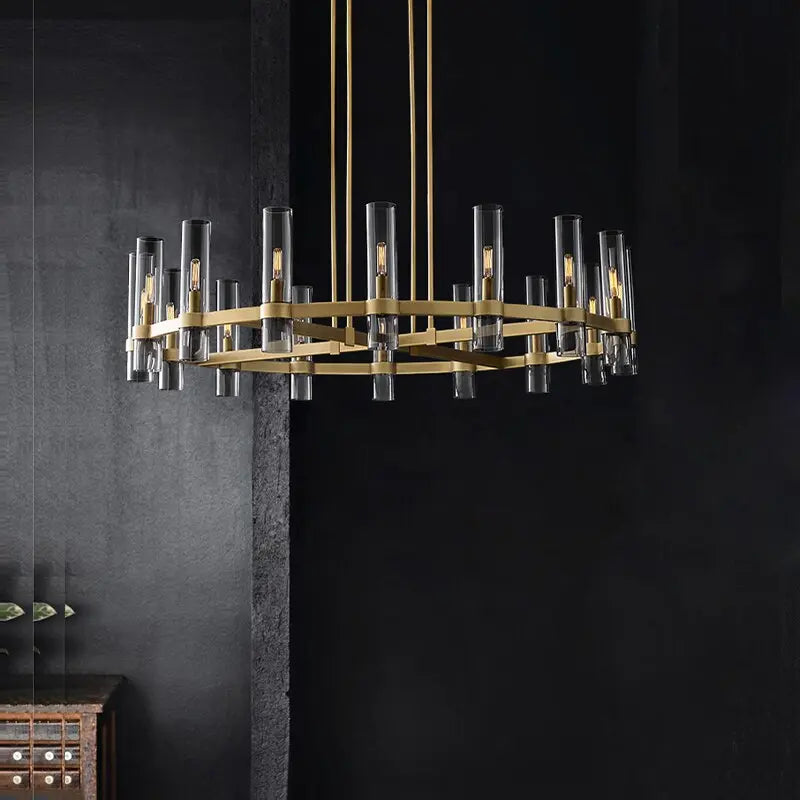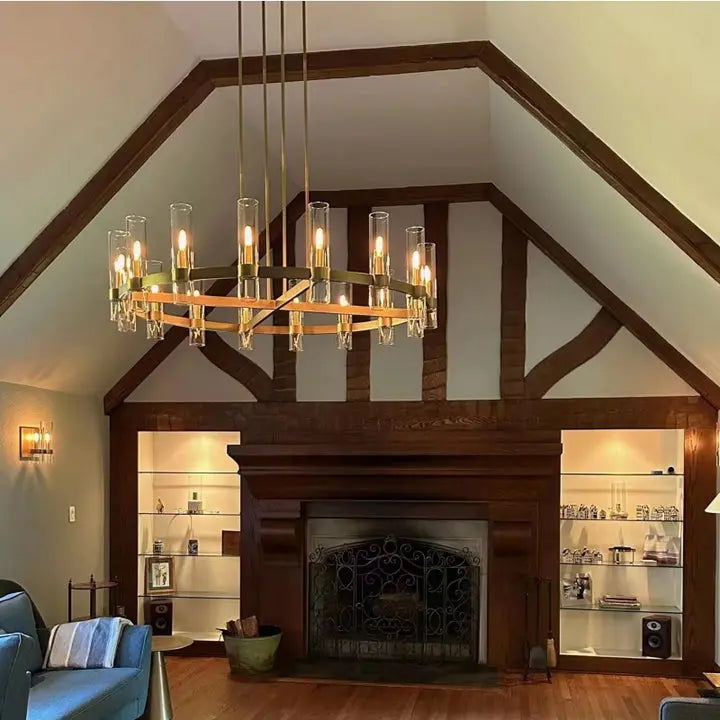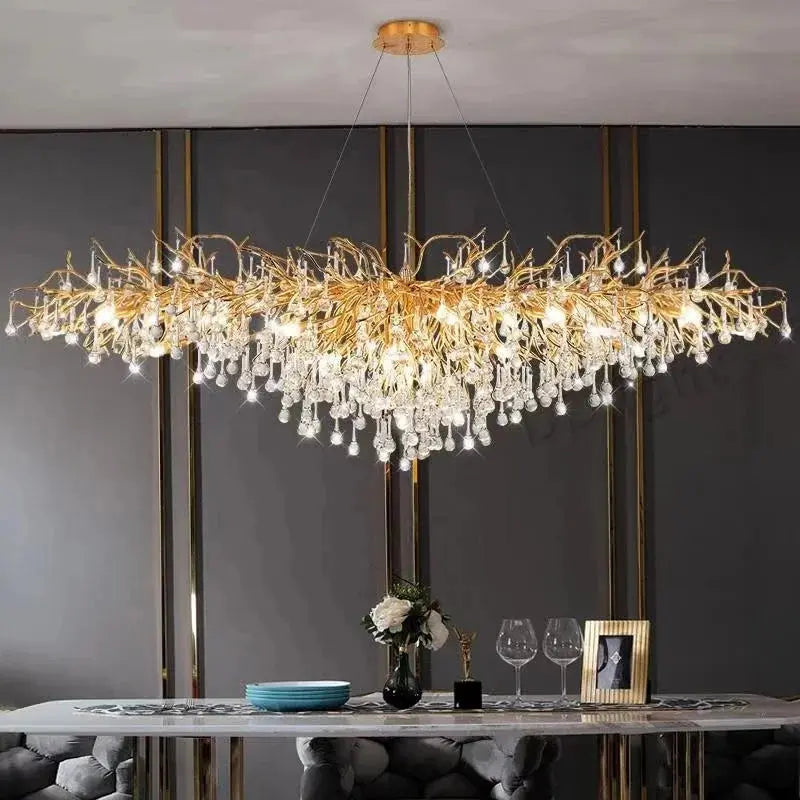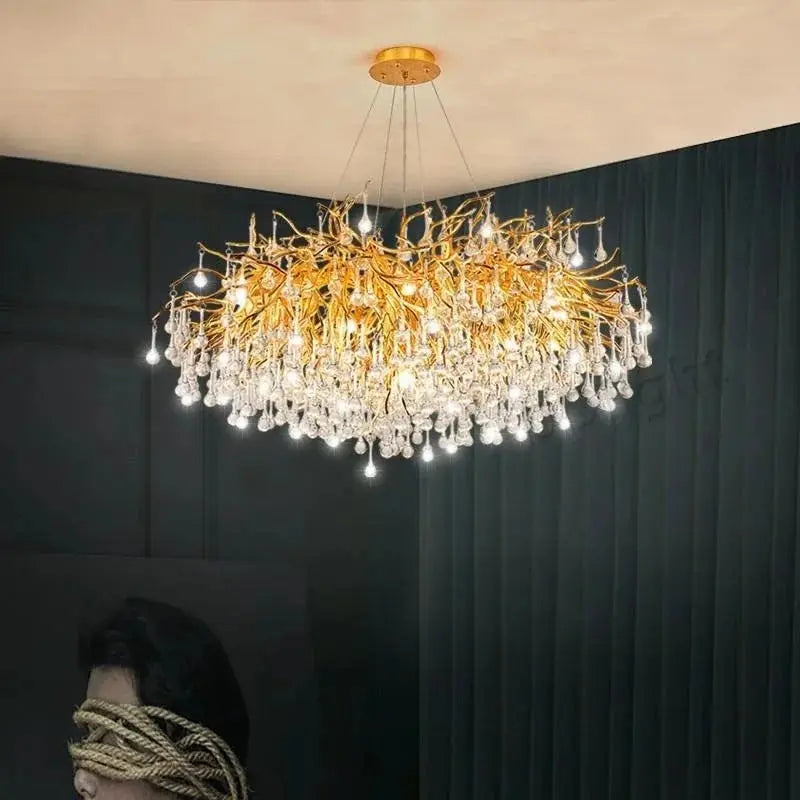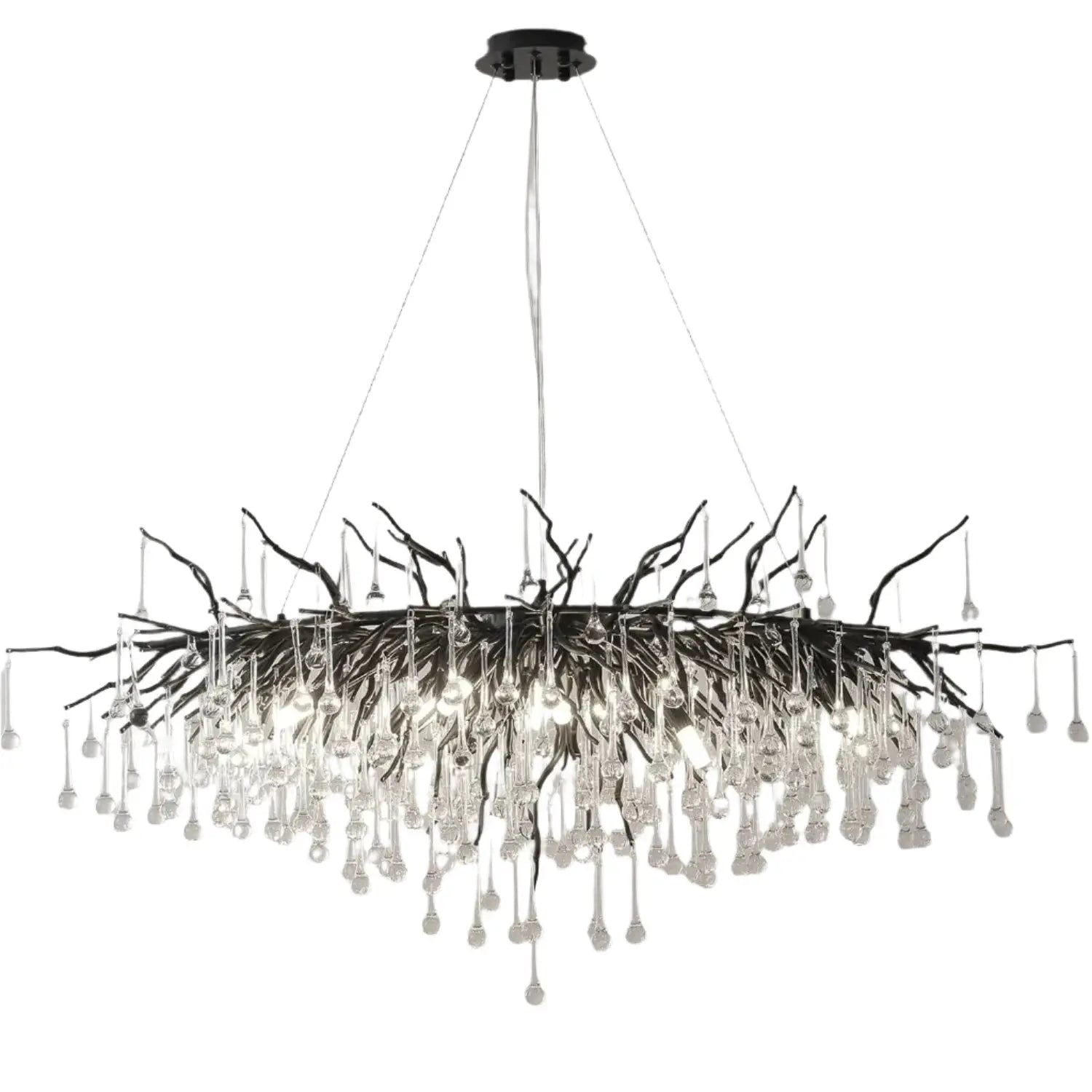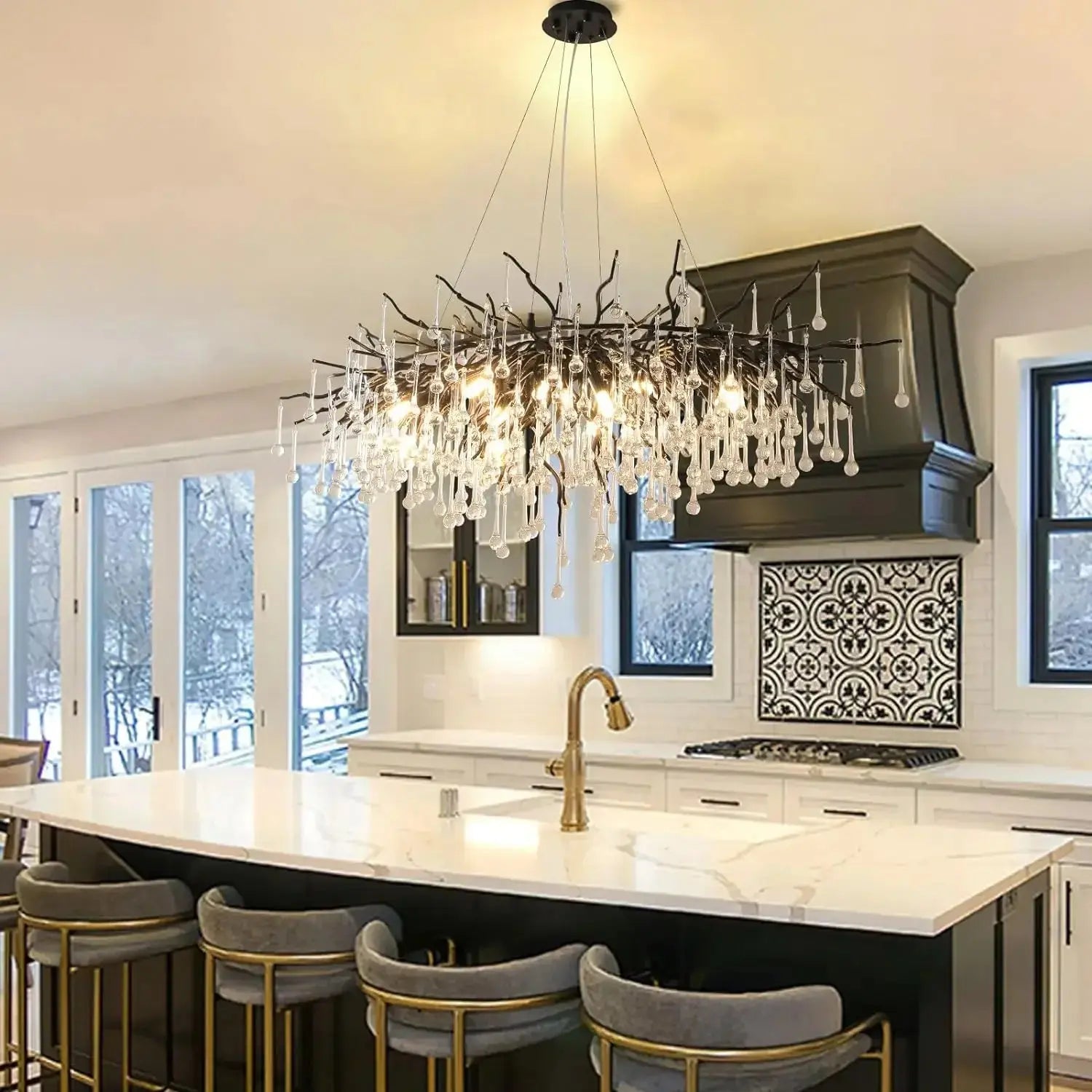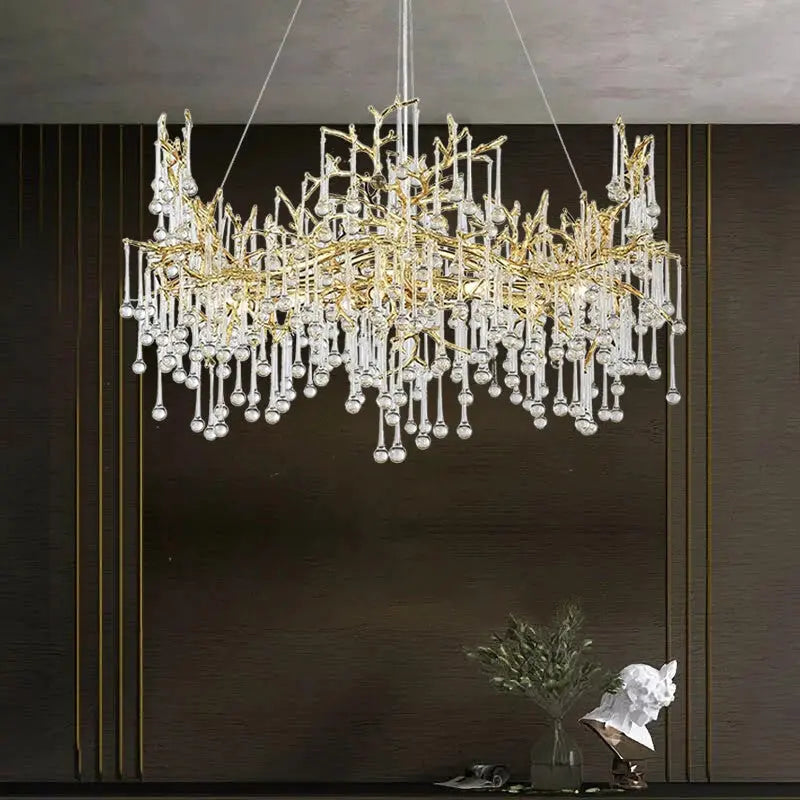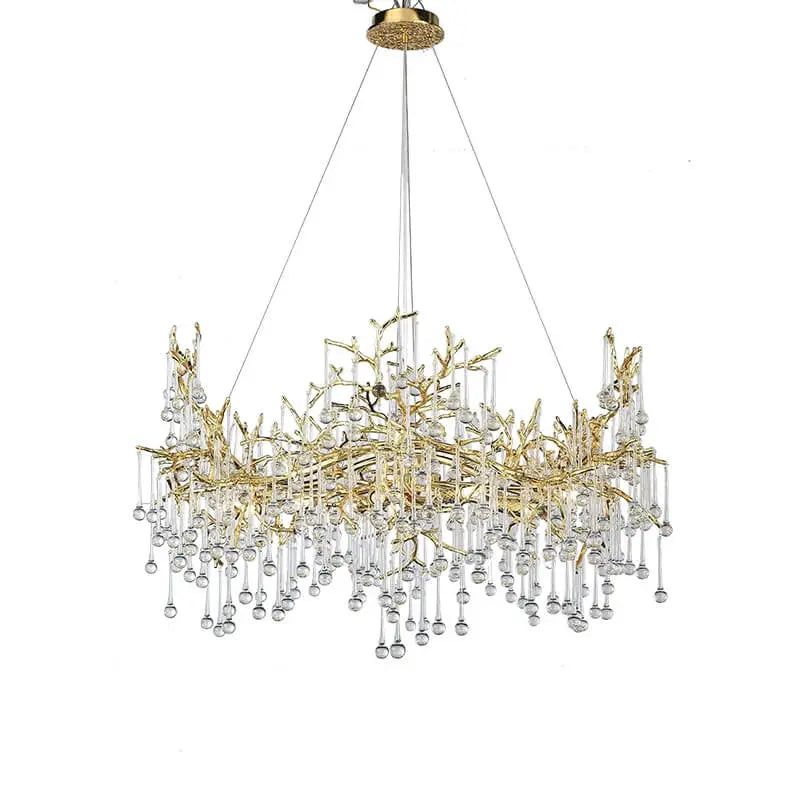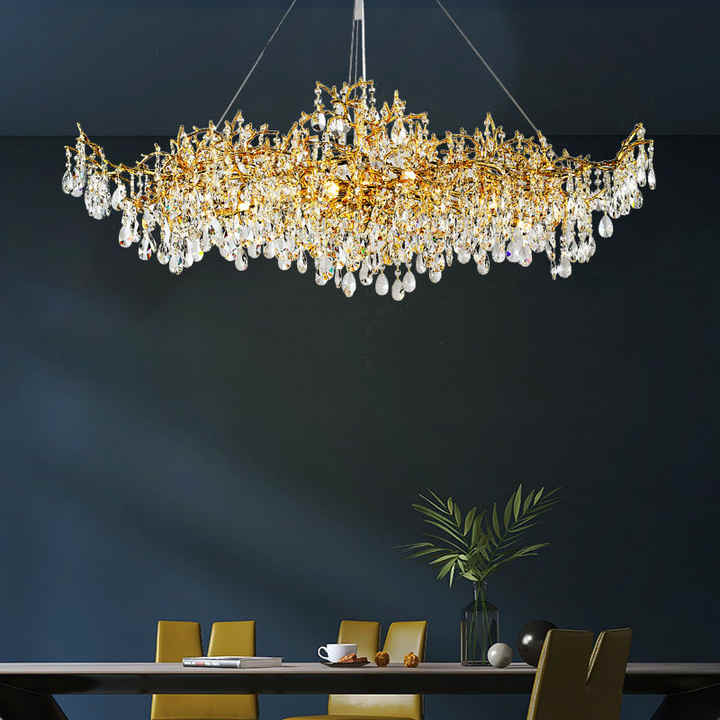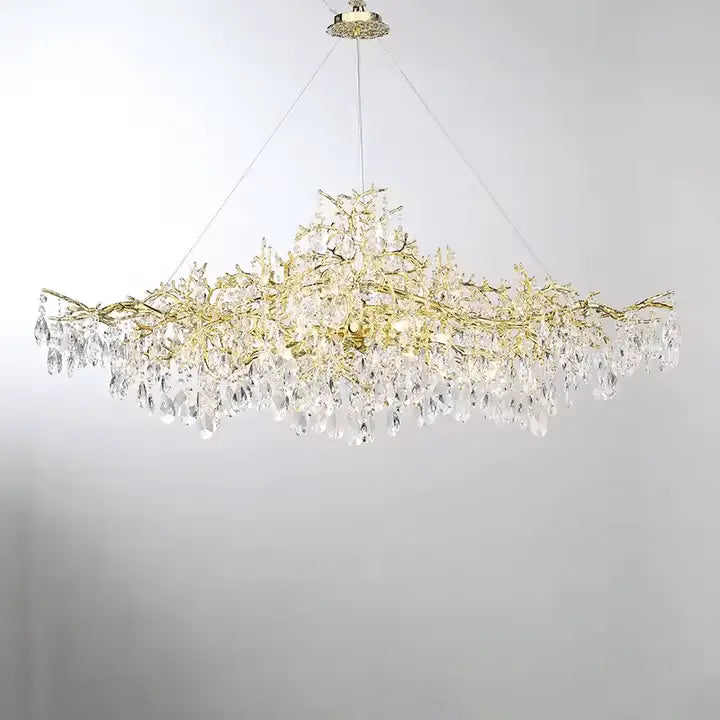Choosing the right high ceiling chandelier can really change the vibe of a room. It’s not just about lighting; it’s about making a statement and adding a touch of elegance. With so many options out there, it can be a bit overwhelming. But don’t worry! This guide will help you find the perfect chandelier that not only fits your space but also matches your style.
Key Takeaways
- Pick a chandelier that suits the height of your ceiling for a balanced look.
- Make sure the chandelier size is appropriate for your room's dimensions.
- Choose a style that matches your overall decor, whether it's modern, traditional, or something else.
- Consider using LED bulbs for energy savings and a cozy atmosphere.
- Think about how the chandelier will work with other lighting in the room.
Understanding High Ceiling Chandeliers
When you've got high ceilings, regular light fixtures just don't cut it. That's where high ceiling chandeliers come in. They're not just about light; they're about making a statement and filling that vertical space in a way that's both functional and beautiful. Let's get into what makes them special.
Defining High Ceiling Chandeliers
So, what exactly is a high ceiling chandelier? It's more than just a regular chandelier hung higher. These fixtures are designed with longer suspensions or chains, and often have larger dimensions, to suit rooms with ceilings that are typically 10 feet or higher. They're built to be visually impactful from the ground, ensuring they don't get lost in the vastness of the space. Think of them as statement pieces that draw the eye upward and add a sense of grandeur.
Benefits of High Ceiling Chandeliers
Why bother with a chandelier light fixture specifically for a high ceiling? Well, there are several good reasons:
- Visual Impact: They fill the vertical space, preventing the room from feeling empty or cavernous.
- Ambiance: They create a warm and inviting atmosphere, especially important in large rooms that can feel cold.
- Focal Point: They serve as a stunning focal point, drawing attention and adding character to the room.
High ceiling chandeliers aren't just about aesthetics; they also play a crucial role in the overall lighting design of a space. They can provide ambient light, task lighting, or accent lighting, depending on the design and placement. This versatility makes them a valuable addition to any room with high ceilings.
Choosing the Right Style
With so many options out there, picking the right style can feel overwhelming. Do you go modern, classic, or something totally unique? It really depends on your personal taste and the existing decor of your space. Consider the architectural style of your home. A modern home might benefit from a sleek, minimalist chandelier, while a traditional home might call for something more ornate and classic. Don't be afraid to mix and match, but make sure there's a cohesive element that ties everything together. Think about the oversized lighting and how it will improve the natural lighting schemes.
Choosing the Right Size and Style

When picking out a high ceiling chandelier, size and style are super important. Get it wrong, and your room could look off. Too small, and it disappears. Too big, and it's all anyone sees. So, how do you get it just right?
Chandelier Size: Getting the Proportions Right
Okay, so here's a simple trick I learned. Add the room's length and width in feet. Then, turn that number into inches. That's roughly the diameter your chandelier should be. For example, if your room is 20 feet long and 15 feet wide, aim for a chandelier around 35 inches in diameter. This helps the chandelier fit without being overwhelming.
Selecting a Style That Complements Your Space
Think about the vibe you're going for. Is it modern, classic, or something else? The chandelier should match. Here are a few ideas:
- Modern: Clean lines, simple shapes, maybe chrome or brushed nickel. Great for a sleek look.
- Classic: Intricate details, maybe crystal or antique finishes. Adds a touch of fancy.
- Rustic: Natural materials like wood or wrought iron. Makes the room feel cozy.
Choosing the right style is key. It can be the focal point, tying everything together.
Balancing Aesthetics and Functionality
Don't just think about looks. Consider how the chandelier will actually light the room. Do you need a lot of light, or just a little? Think about using dimmers to control the brightness. Also, consider how the chandelier works with any natural light. If you have big windows, you might not need as much artificial light. It's all about finding that sweet spot where it looks good and works well.
Installation Tips for High Ceiling Chandeliers

Installing a chandelier for living room with high ceiling can seem like a huge task, but with the right planning, it's totally doable. It's not just about hanging it up; it's about making sure it's safe and looks amazing. Let's break down the steps to make it easier.
Preparing for Installation
Before you even think about touching the chandelier, get everything ready. This means checking the ceiling's support, gathering your tools, and reading the instructions. Make sure the power is off! Seriously, this is the most important step.
- Check the ceiling's capacity. If the chandelier is heavy (over 15 pounds), you might need a special electrical box.
- Read the chandelier's instructions. Every model is different, so don't assume you know what to do.
- Gather all your tools. Having everything within reach will save you a ton of time and frustration.
Safety Considerations
Safety first, always. Working with electricity and heights can be dangerous, so take precautions. If you're not comfortable with any part of the installation, call a professional. It's better to be safe than sorry.
- Turn off the power at the breaker. Double-check to make sure it's off before you start working.
- Use a sturdy ladder. Make sure it's stable and on a level surface.
- Wear safety glasses. Protect your eyes from falling debris.
If you're unsure about any part of the installation, it's always best to hire a qualified electrician. It might cost more upfront, but it can save you from potential hazards and costly mistakes down the road.
Tools You Will Need
Having the right tools makes the job so much easier. Here's a list of essentials:
- Screwdriver set (Phillips and flathead)
- Wire strippers
- Electrical tape
- Voltage tester
- Pencil
- Measuring tape
- Ladder
- Gloves
- Safety glasses
Materials and Finishes to Consider
Crystal Chandeliers for a Touch of Glamour
If you're aiming for a luxurious and elegant vibe, crystal chandeliers are a classic choice. They catch and refract light beautifully, creating a dazzling display. The quality of the crystal matters – higher quality crystals will have more sparkle. Consider the shape and arrangement of the crystals too. A cascading design can add drama, while a more streamlined crystal chandelier can feel modern and chic. Don't forget to factor in the weight, as crystal can be heavy, requiring robust support.
Metal Finishes for a Sleek Look
Metal finishes offer a range of styles, from contemporary to industrial. Polished chrome and brushed nickel provide a modern, clean aesthetic, while bronze and brass can add warmth and a touch of vintage charm. Wrought iron is great for a rustic or farmhouse style. The finish should complement the other metal accents in your space, such as door hardware or furniture legs. A sleek metal finish can be a great way to add a touch of sophistication without being overly ornate. Think about how the metal will age over time – some finishes develop a patina that adds character.
Incorporating Glass Elements
Glass isn't just for the crystals; it can be used in various other ways in chandelier design. Think about Murano glass for a pop of color and artistic flair, or frosted glass for a softer, diffused light. Glass globes or shades can create a more modern look, while clear glass can showcase the light bulbs themselves. Consider the texture of the glass – ribbed or textured glass can add visual interest. Also, remember that glass can be easier to clean than some other materials, which is a practical consideration for a high ceiling fixture. You can find modern marble lamps that incorporate glass elements for a unique look.
Choosing the right materials and finishes is key to ensuring your chandelier complements your overall decor. It's not just about aesthetics; it's also about durability and how the materials will interact with the light in your space. Think about the long-term maintenance and how the finish will hold up over time.
Understanding the Importance of Scale and Proportion
When picking out a chandelier, especially for rooms with high ceilings, getting the scale and proportion right is super important. The right chandelier can really make your space look amazing, but the wrong one? It can throw everything off balance. Here's what I've learned:
Choosing the Right Size for Your Space
First things first, measure your room! Get the height and width. A simple trick is to add those measurements (in feet) together, then turn that number into inches. That's roughly the diameter your chandelier should be. For example, if your room is 20 feet long and 15 feet wide, that adds up to 35 feet. So, you're looking at a chandelier around 35 inches wide. This helps make sure the chandelier fits without being too much or too little.
Proportions and Balance
- Think about the furniture you already have. A huge chandelier might not work in a small room, and a tiny one will get lost in a big space. It's all about balance.
- Consider the style of your room. A fancy crystal chandelier might look weird in a super modern, minimalist space. Make sure the chandelier fits the overall vibe.
- For high ceilings, go bigger! A multi-tiered chandelier can really fill that vertical space and make the room feel complete.
Creating Visual Harmony
- The right chandelier can tie everything together. It can be the thing that makes all the different design elements in your room feel like they belong together.
- Don't overdo it. Sometimes, one awesome chandelier is better than a bunch of smaller decorations. Keep it simple and let the chandelier be the star.
- Think about how the chandelier works with natural light. If you've got lots of windows, a chandelier can help bridge the gap between natural and artificial light, making the room feel bright and welcoming all the time.
A good chandelier does more than just light up a room. It changes the whole feel of the place, making it more inviting and stylish. It's like adding a piece of art that also happens to be functional.
Lighting Techniques for High Ceilings
When you've got high ceilings, regular lighting just doesn't cut it. You need to think differently to really make the space shine. It's not just about brightness; it's about creating the right mood and highlighting the best parts of your room. Let's explore some ways to get it right.
Combining Different Lighting Sources
Don't rely on just one type of light. Layering is key. Think about it like this: you need a base layer, a middle layer, and a top layer to really get the effect you want.
- Ambient lighting is your base. This is your overall, general light. Think recessed lights or even a large, diffused fixture.
- Task lighting is for specific areas. Maybe you have a reading nook or a workspace. A floor lamp or pendant light works great here.
- Accent lighting is the jewelry. It highlights artwork, architectural details, or anything else you want to show off. Track lighting or spotlights can do the trick.
Using Dimmers for Ambiance
Dimmers are your best friend. Seriously. They let you change the mood of the room with the flick of a switch. Bright and energetic for a party? Dim and cozy for a movie night? Dimmers make it easy. Plus, they can save energy. It's a win-win. Consider dimmable fixtures for your high ceiling chandelier.
Highlighting Architectural Features
High ceilings often come with cool architectural details – beams, arches, interesting angles. Don't let them fade into the background! Use lighting to show them off. Spotlights or track lighting can be aimed to accentuate these features. This adds depth and interest to the room. Think about how museums light up their exhibits – same idea.
Good lighting can completely transform a space. It's not just about seeing; it's about feeling. The right combination of light sources and techniques can make a room feel larger, warmer, and more inviting.
Maintenance and Care for Your Chandelier
Regular Cleaning Tips
Okay, so you've got this amazing chandelier hanging up there, right? It looks fantastic, but let's be real, it's gonna get dusty. Dust is the enemy! I usually grab a soft microfiber cloth – those work wonders. Just gently wipe down the frame and any crystals or glass bits. Don't use anything abrasive, or you'll scratch it. For those hard-to-reach spots, a duster with a long handle is a lifesaver. I try to do a quick dusting every couple of weeks to keep it looking its best. For more intense cleaning, you might want to consider a proper chandelier cleaning solution.
Checking Electrical Components
Alright, this is important. Electricity and dust? Not a good mix. Every few months, I turn off the power at the breaker (safety first!) and give the wiring a quick once-over. Look for any frayed wires, loose connections, or signs of damage. If you see anything sketchy, don't mess with it yourself – call an electrician. Seriously. It's not worth risking a fire or getting shocked. Also, make sure all the bulbs are the correct wattage for the fixture. Overloading it can cause problems. Consider using smart LED bulbs for energy efficiency.
Ensuring Stability and Safety
This is something people often overlook. That chandelier is heavy, and it's hanging over your head! Make sure the mounting hardware is solid. Give it a gentle tug (not too hard!) to see if anything feels loose. If it does, tighten the screws or bolts. If you're not comfortable doing that, get a professional to check it out. It's also a good idea to check the chain or cable that's supporting the chandelier. Look for any signs of wear or damage. If you see anything, replace it immediately. A secure installation is key to safety.
Honestly, taking care of your chandelier isn't that hard. A little bit of regular maintenance can go a long way in keeping it looking beautiful and working safely for years to come. Plus, it's way cheaper than having to replace the whole thing!
Wrapping It Up
So, there you have it! Picking the right chandelier for your high ceiling can really change the vibe of your space. It’s not just about light; it’s about style and making a statement. Remember to think about size, height, and how it fits with your room's overall look. Whether you go for something modern or a classic tiered design, make sure it speaks to your taste. A well-chosen chandelier can turn your home into a cozy yet elegant retreat. Now, go out there and find that perfect piece that will light up your life!
Frequently Asked Questions
What size chandelier should I choose for high ceilings?
To find the right size chandelier for high ceilings, add the room's length and width in feet, then convert that total to inches. For example, in a 20x15 foot room, a chandelier around 35 inches wide would work well.
How can I light a room with a 20-foot ceiling?
For a room with a 20-foot ceiling, use a mix of lighting types. Pendant lights can be hung at different heights, and recessed lighting can help brighten the space.
Can a chandelier be too heavy for my ceiling?
Yes, if a chandelier weighs over 15 pounds, it may need special support to make sure it stays secure, just like a ceiling fan.
What materials are best for high ceiling chandeliers?
Popular materials include crystal for glamour, metal for a sleek look, and glass for a modern touch. Each adds a unique style to your space.
How can I maintain my chandelier?
Regularly clean your chandelier to keep it looking great. Check the electrical parts occasionally to ensure everything is safe and stable.
What is the best way to install a high ceiling chandelier?
Before installing, prepare the area and make sure you have the right tools. Always prioritize safety by using a sturdy ladder and, if needed, hiring a professional.


